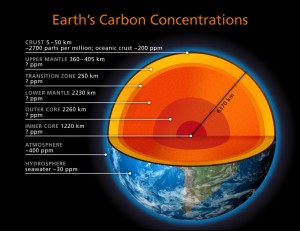 Deep Carbon Observatory, Carnegie Institution of Washington DC
Deep Carbon Observatory, Carnegie Institution of Washington DC
4-Mar-2013
 Probing the secrets of volcanoes and diamonds, sources of gas and oil, and the origins of life itself, Deep Carbon Observatory scientists publish landmark volume 3 years into historic 10-year, $500 million global collaboration
Probing the secrets of volcanoes and diamonds, sources of gas and oil, and the origins of life itself, Deep Carbon Observatory scientists publish landmark volume 3 years into historic 10-year, $500 million global collaboration
From Earth’s surface to hundreds of kilometers deeper than oilmen drill, the Deep Carbon Observatory (DCO) is investigating the surprising quantity of carbon in the deep, dark Earth beyond photosynthesis.
The program is investigating deep carbon’s movement in the slow convection of the mantle, the percolating fluids of the crust, and the violent emission from volcanoes. It searches for the ancient origin of the deep carbon, and the formation and transformation of its many forms, ranging from gas and oil to diamonds and deep microbes.
Ninety percent or more of Earth’s carbon is thought to be locked away or in motion deep underground—a hidden dimension of the planet as poorly understood as it is profoundly important to life on the surface, according to scientists probing the world’s innermost secrets in the decade-long, $500 million project.
In a landmark volume, DCO scientists say estimates of carbon bound in the metallic core alone range from 0.25 to 1 percent by weight. If 1 percent proves correct, the core by itself sequesters four times more carbon than all known carbon reservoirs in the rest of the planet—and 50,000,000 times as much as that held in the flora and fauna on Earth’s relatively wafer-thin skin far above.
News release in full: click here
Sample coverage: by Reuters, click here, by The Canadian Press / Associated Press, click here, by Agence France Presse, click here, by the InterPress Service, click here, Agencia EFE (Spanish here, Portuguese here), by Public Radio International (Living on Earth), click here
Complete coverage summary: click here